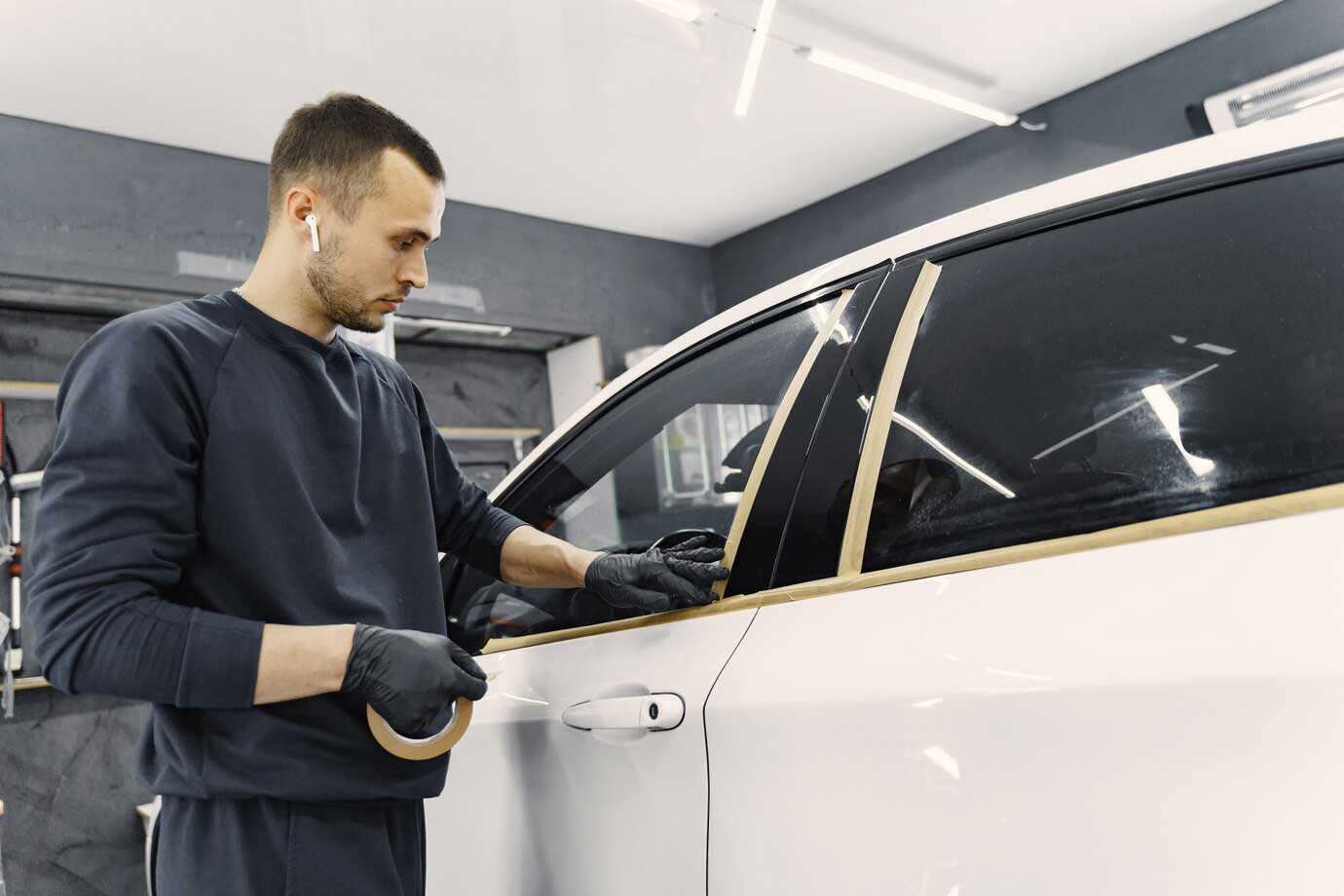When it comes to enhancing the aesthetic appeal, privacy, and comfort of your vehicle, automotive window tinting emerges as a popular solution. The world of window tinting offers a diverse range of options, and understanding the different shades of window tint can be a key factor in making an informed decision. In this comprehensive guide, we’ll delve into the various shades available, explore shades of window tinting chart, discuss the types of window tint shades, and provide insights into automotive window tinting.
Exploring Different Shades of Window Tint
1. Light Tints for a Subtle Look
Light window tints are perfect for those who want to maintain a clear view while benefiting from reduced glare and UV protection. These tints often fall within the 50% to 70% Visible Light
Transmission (VLT) range, allowing a significant amount of natural light to enter the vehicle. Light tints strike a balance between style and functionality, making them a popular choice among drivers who prioritize visibility.
2. Medium Tints for a Blend of Style and Privacy
Medium window tints, with VLT percentages ranging from 30% to 50%, offer a compromise between aesthetics and privacy. These tints reduce the amount of visible light inside the vehicle,
adding a touch of sophistication to its appearance. Medium tints are widely chosen for striking the right balance between a stylish look and practical benefits like heat reduction and interior protection.
3. Dark Tints for Maximum Privacy
For those who prioritize privacy and a sleek appearance, dark window tints are the way to go. Falling below 30% VLT, these tints significantly reduce visible light transmission, enhancing both privacy and security. Dark tints are often preferred for luxury vehicles and individuals seeking a bold, stylish statement. However, it’s crucial to adhere to local regulations regarding window tint darkness to avoid legal issues.
Shades of Window Tinting Chart
Understanding the shades of window tinting is made easier with the help of a window tinting chart. This chart typically displays VLT percentages alongside the corresponding tint shades. From nearly transparent to deep, opaque tints, the chart acts as a visual guide, aiding car owners in choosing the ideal tint level for their preferences and needs. Before selecting a window tint, referring to the shades of the window tinting chart can be a valuable step in the decision-making process.
Shades of Window Tint for Cars
Choosing the right shades of window tint for cars involves considering factors beyond aesthetics. Each tint level offers distinct advantages, and tailoring your choice to your specific requirements is crucial.
1. Types of Window Tint Shades for Cars
a. Ceramic Window Tints
Ceramic window tints are known for their superior heat reduction properties and durability. They come in various shades, offering both style and functionality. With advanced technology, ceramic tints provide excellent UV protection without compromising visibility.
b. Dyed Window Tints
Dyed window tints are an affordable option that adds a layer of dye between the adhesive and protective outer layer. While providing good heat absorption, dyed tints are available in a range of shades, making them a versatile choice for car owners.
c. Carbon Window Tints
Carbon window tints are a popular choice for those seeking a matte finish. They offer superior heat resistance and UV protection while maintaining a sleek appearance. Carbon tints are available in various shades to suit different preferences.
2. Advantages of Automotive Window Tinting
a. Heat Reduction
One of the primary benefits of automotive window tinting is heat reduction. By blocking a significant amount of solar heat, window tints help maintain a comfortable interior temperature, especially during hot weather.
b. UV Protection
Window tints act as a barrier against harmful UV rays, safeguarding both the occupants of the vehicle and the interior surfaces. This protection can contribute to preventing skin damage and preserving the car’s upholstery.
c. Glare Reduction
Reducing glare from the sun and headlights of other vehicles enhances visibility, reducing eye strain for the driver and improving overall safety on the road.
Conclusion
In conclusion, the world of automotive window tinting offers a spectrum of choices, from light tints that prioritize visibility to dark tints that provide maximum privacy. Understanding the different shades of window tint, referring to shades of window tinting chart, and considering the types of window tint shades for cars are crucial steps in making an informed decision. Whether you opt for ceramic, dyed, or carbon window tints, each type comes with its own set of advantages, contributing to a more comfortable and stylish driving experience. So, the next
time you consider window tinting for your vehicle, weigh your options wisely, keeping in mind the diverse shades available and the specific benefits they offer.


